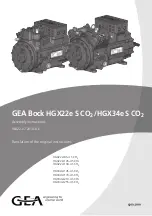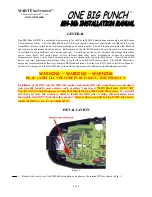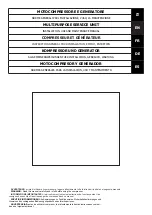
Risk of Explosion or fire Never operate the compressor near combustible materials, gasoline
or solvent vapors. If spraying flammable materials, locate the air
compressor at least 50m away from the spray area. Never operate the
air compressor indoors or in a confined area.
Risk of Bursting
Always drain the air compressor tank daily or after each use. If the
tank develops a leak, then replace the air compressor. Never use
the air compressor after a leak has been found or try to make any
modifications to the tank. Never modify the air compressor’s factory
settings which control the tank pressure or any other function.
PARTS & FEATURES
Drain Valve:
Used to drain condensation from
the air tank. Located at bottom of tank. (52)
Motor Thermal Overload:
The motor has an
automatic thermal overload protector. If the
motor overheats, this protector will shut off the
motor. The motor must be allowed 30 minutes to
cool before restarting.
Pressure Switch:
This controls the power to
the motor and also the cut-in/cut-out pressure
settings. This switch serves as the Auto-On/Off
positions for the unit. (45)
Air Intake Filter
: Provides clean air to the pump
and must always be kept free of debris. Check
on a daily basis or before each use. (38)
Check Valve:
When the pump is not in
operation the valve closes to retain air pressure
inside the tank. (60)
Pressure Relief Valve:
The pressure relief
valve located on the side of the pressure switch
is designed to automatically release compressed
air when the air compressor reaches cut-out
pressure. The release air should only escape
momentarily and the valve should then close.
Tank Safety Valve:
Used to allow excess tank
pressure to escape into the atmosphere. This
valve should only open when the tank pressure
is above the maximum rated pressure. (46)
Outlet Pressure Gauge:
Indicates the outgoing
air pressure to the tool and is controlled by the
regulator. (42)
Tank Pressure Gauge:
Indicates the reserve air
pressure in the tank. (43)
Regulator:
The regulator controls the air
pressure coming from the air tank. To increase
the pressure, turn the knob clockwise and
to decrease the pres¬sure turn the knob
counterclockwise. (41)
3.

























